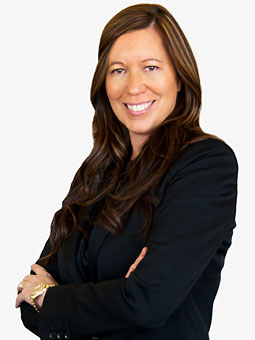
As CEO of Arnell Group (AG), Sara Arnell manages the agency's internal brand consulting group, directing consumer research, consumer insights and the development of business, brand and digital strategies which form a seamless bridge to AG's advertising and design teams. Previously, Sara spent 21 years directing brand and business strategy for AG's clients. Some of the companies Sara has worked with include Revlon, PepsiCo, GNC, and Jose Cuervo International, Mars, Unilever and Johnson & Johnson.
I met with Sara a couple of times over lunch to discuss her marketing concept "freshing" -- a method for keeping brands fresh through the power of constant, forward-moving change.

Mel: What exactly is freshing?
Sara: Brands have what we call "innovation time frames." Every one or two years, companies might have one big idea about how they can refresh a brand. They take a really long time to develop it and test it, both internally and externally, until finally, the idea is ready to be revealed. That gives a company only one opportunity to make news. The idea with freshing, which is about constant change, is to regularly come out with a lot of small ideas so the excitement is always building. Then you have lots of opportunities to have people talking about your brand.
Mel: How did this concept come to you?
Sara: We live in one big social network. Have you updated your profile picture in the last week? Changed your relationship status? "Liked" something? That is all freshing. Every time you tell people you know, or don't even know, a little bit about what's happening in your life, you are freshing. You are putting out news and highlighting events that add value to who you are and what is going on with you. I think social media has raised the public's expectations about getting news all the time; people are always signing onto their networks to add relevance. And they are always going back to check the relevance of the people in their network. So the idea came to me that since people are doing it daily, couldn't the idea apply to brands, too?
Mel: So is it a more "holistic" approach to branding?
Sara: Yes. It is also lower risk, more subtle and more consistent. The worst thing that someone can say about a brand is that it is not relevant. So the planning of change, in small increments, brings you into a process that people can be involved with every day.
Mel: What is the difference between freshing and the changes any brand or company must make over time to stay competitive and survive?
Sara: If you look at the economy, you'll see that everyone is having the same conversations. Our budgets have to be cut. We need to do more with less. We need to meet consumer needs. In today's competitive market place, we do not necessarily get rewarded for taking risks. We get rewarded for successes, but risks do not always pay off. With freshing, you have lower cost and lower risk. If an idea doesn't work out, you can move right onto the next thing. It's not like you have the devastation of putting one or two years and a lot of money and effort into one idea that doesn't pan out. And if it does pan out, consumers will quickly become bored with it and be looking for the next big thing.
Mel: Freshing appears steadier, less stressful and, ultimately, more integrated.
Sara: It is. Freshing is a business practice, but you can still apply it to yourself. You just told me that you stopped eating sugar. You made one little change that can have a big impact on your overall health. You mentioned that next, you want to cut out caffeine, so when you are ready, you will stop that, too. And one day when your husband looks at you and says "Yea baby," you'll know that making those gradual changes worked. The alternative, putting all this pressure on yourself by cutting everything out at once and going to the gym every day, would take so much time, effort, even money. Not only would you be miserable from completely depriving yourself, but you would eventually burn out, and ultimately, it wouldn't work.
Mel: What companies are doing a good job of freshing at this time?
Sara: Starbucks and Target are great examples -- every time you walk in, you can expect to see something new. In turn, they become brands we love and are loyal to. You have to give consumers something to be excited about, especially for products they already know and love -- that is the real trick to freshing.
Mel: So is all change freshing?
Sara: Not everything you do out there is freshing. Freshing involves strategic change, not random change. Telling your Facebook community that you just went out for a lobster roll, for instance, is not freshing, but changing your picture status or liking something can be -- if it moves your conversation forward and gives out tidbits of information for people to latch onto and understand.
Mel: What are some types of products that are traditionally good at freshing?
Sara: Things like laundry detergent, paper towels and home products are constantly making subtle improvements. How many ads do you see about these products that boast that they are "new and improved"? And they often really are. Consumer product companies are geniuses in this regard. For example, there is a company (Scott) that has gotten rid of the cardboard roll in the middle of toilet paper. If you can innovate toilet paper, then you're doing something right. Software companies are also great at freshing. Every time you open up your computer, there is something new to download -- a new improvement, an app for your smart phone -- all of this is freshing.
Mel: Let's talk about M&Ms. They were the same for years. Now they do a lot of limited editions. Different colors, different combos of flavors from nuts to pretzels. That sounds like freshing.
Sara: Yes! Making those subtle changes is a good way to test consumers and see what they want.
Mel: Who needs to do a better job of freshing?
Sara: I think car companies in general need to do a better job of keeping what people love about a car in place while still bringing something new to it.
Mel: I have a real problem with apparel companies that put out a classic look and then pull it the following year for all new, trendy stuff.
Sara: You don't have to reinvent the wheel with freshing. These companies can change the colors for the seasons and don't have to toss everything out. Now, if you wait too long, then you might just need to do a complete revamp, but the idea of freshing is to teach people that brands shouldn't wait until they are at that point. Freshing treats it along the way, almost like preventative care.
Mel: J.C. Penny recently unveiled a new logo and has had some snappy ads to go with it. Do you think that is freshing or a total new revamp?
Sara: Interesting that you mention J.C. Penny. Recently, they changed their structure and began offering "month-long values." That did not seem to be working. Their sales went down significantly. So they changed their message to "sale" instead, and sales instantly picked back up. The customers didn't connect with "month-long values," but "sale" resonated. It wasn't vague. That little message tweak is freshing. So, too, is PR, a new logo design, a cool promotion. Freshing can take many forms -- and, for the best brands, it's never finished.
